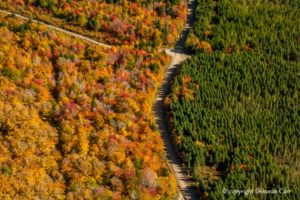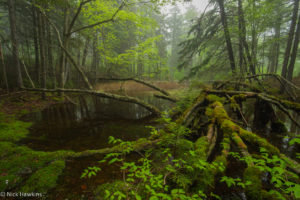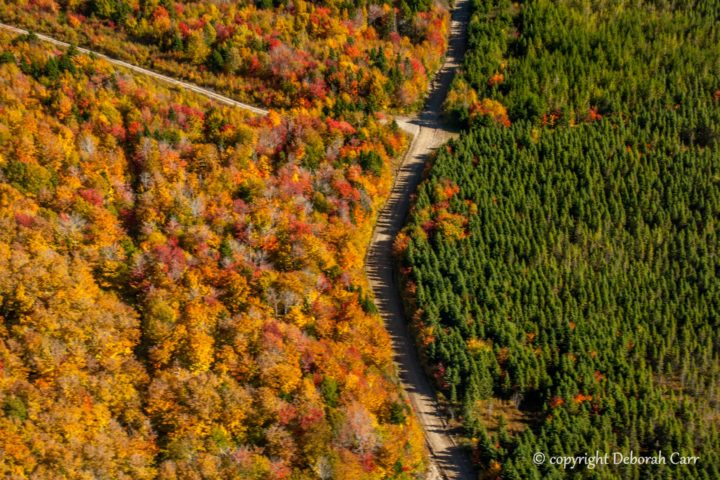[vc_row][vc_column][vc_cta h2=”Election N.B.: Ask candidates at your door..” h2_font_container=”font_size:30″ h2_google_fonts=”font_family:Alegreya%20Sans%20SC%3A100%2C100italic%2C300%2C300italic%2Cregular%2Citalic%2C500%2C500italic%2C700%2C700italic%2C800%2C800italic%2C900%2C900italic|font_style:400%20regular%3A400%3Anormal” color=”white” use_custom_fonts_h2=”true” use_custom_fonts_h4=”true” css=”.vc_custom_1537456812649{background-color: #abd68d !important;}”]1. Will you commit to developing a new Crown Land and Forests Act that works for all New Brunswickers, creates well-paying jobs, is fair for private woodlot owners, protects water and biodiversity, and keeps people working, hunting, fishing and enjoying the woods for years to come.
2. Will you commit to ending the old-fashioned and unnecessary practice of spraying glyphosate-based herbicides to treat large tree plantations on Crown land?[/vc_cta][vc_column_text]A lot of New Brunswickers have a picture of what our forest looks like in their mind.
Known as a tree-canopied province, we think of vast areas of towering hardwoods—of maples, oaks, birch and ash—sustaining our iconic moose and deer, mixed with thick softwoods— of red pines, balsam firs, tamaracks and hemlocks—sheltering smaller woodland critters, all connected through a web of rivers, brooks and streams that flow life into our communities, our towns, villages and cities.
This is the forest many generations of New Brunswickers grew up in—hunting, hiking, fishing, working. This rich, biodiverse setting, however, is harder and harder to come by when you actually go out into the woods today.

Decades of mismanagement in our Crown forest, and especially its profit-driven reliance on larger-scale clearcutting, has significantly changed the face and feel of our woods. Huge swaths of once thriving Acadian forest have been stripped, replaced by tree farms of predominantly one or two softwood species. Thinning crews of men and women working in the woods have been replaced with helicopters that spray roughly 13,000 hectares of industrial tree farms each year with poisons to kill competing hardwoods. Private woodlots, once the lifeblood of so many families and communities, have been allowed to be boxed out by large forestry companies.
We’re left today with a forest that is vastly different from what we think it is. Beyond the scrim of our tree-lined highways is a fractured, fragmented forest that no longer serves the needs of all New Brunswickers, our woods workers, our hunters and fishers, or the dozens of communities that grew up in and around the woods.[/vc_column_text][vc_single_image image=”136432″ img_size=”full”][vc_column_text]Frank Johnston knows this reality all too well. He’s flown over it, walked through it, and has spent years poring over independent satellite data confirming the new face of our forest.
“Outside of protected areas and parks, there are essentially no large areas of intact, natural Acadian forest remaining in New Brunswick,” says Johnston, a member of the Conservation Council’s board of directors.
For the past several years, Johnston, and other great volunteers from our South East Chapter, have used a small plane, ground expeditions, and satellite data from the University of Maryland’s Global Forest Watch Program to document what is happening to New Brunswick’s Crown forest.
“We’ve flown over the major quadrants of the province —the north west, the north east, the south east, the south west, the central part of the province—and wherever we go, we find the same pattern: you will see residual Acadian forest, generally hardwood, next to a stream; you will see a network of roads; you will see a large clearcut; you will see a plantation; another clearcut; then more residual forest probably next to a stream; and increasingly, you will find yourself next to a clearcut that has recently been sprayed with herbicide,” Johnston says.
“And this pattern will be repeated to the horizon.”
Johnston’s team documents cutting patterns in all regions of the province by analysing satellite data from Global Forest Watch, then verifying it with aerial video surveillance and on-the-ground photography.[/vc_column_text][/vc_column][/vc_row][vc_row][vc_column][vc_single_image image=”2844″ img_size=”800 x 400″ alignment=”center”][vc_column_text]Global Forest Watch data shows that between 2000 and 2014, New Brunswick harvested 1.7-times more forest than it gained.
“This is an unsustainable practice, and it effectively means we’re liquidating the existing Acadian forest, and what we’re planting is not the same forest that we cut,” Johnston says.
“The satellite data also shows that New Brunswick is cutting the forest at an intensity twice that of our adjoining juridictions of Quebec and Maine.
“This intensity of cutting and the fragmented forest landscape it creates has a consequence. The ecosystem services we get from a natural forest—the prevention of flooding, the retention of water in the woods during the spring freshet and storms—is greatly reduced, and we’re left with a landscape that is extremely vulnerable to climate change.”[/vc_column_text][/vc_column][/vc_row][vc_row][vc_column][vc_column_text]

Johnston has been presenting his research to groups across the province since September 2016. And while the content of his work can be disheartening— videos from their plane showing the fragmented forest landscape; photos from the ground of seemingly unending clear cuts and plantations; and timelapse videos of satellite imagery showing the bleak reality of more than a decade of clear cutting across all corners of New Brunswick—he always ends with a plan for action, and a vision for a restored, vibrant Acadian forest.
“We can have sustainable forestry practices in this province, practices that promote environmental stewardship,” he says. “This happens in other places in Canada and North America, and we can get it here.
“We need to take control of the management of our forests away from large companies and back into the hands of the people of New Brunswick. And we need to vigorously follow a policy of restoring and protecting the natural Acadian forest.”[/vc_column_text][/vc_column][/vc_row][vc_row][vc_column][vc_single_image image=”139970″ img_size=”large”][/vc_column][/vc_row]

